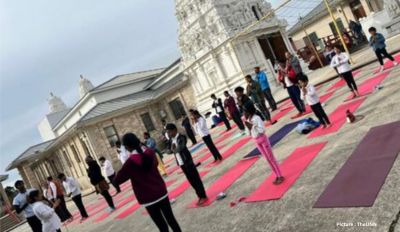Years back, while reading the book ‘Roots,’ I had only a faint idea of the background of African slaves in America. That time, my thoughts could compare life only with scheduled castes and tribes in India.
“In all of us, there is a hunger, marrow-deep to know our heritage,” says Alex Haley, the author of the said book- which is one of the most extraordinary and influential books of our time. The story is about Kinta Kinte, a young man taken from The Gambia when he was seventeen and sold as a slave and transported to North America, following his life and the lives of his six generations of slaves, farmers, blacksmiths, porters, etc. in the United States. In reality, even now, inequality between white and Black Americans persists in almost every aspect of society and the economy.
During my early school days, I knew only the name of Abraham Lincoln, who abolished slavery in America in February 1865. But later, the name of Martin Luther King Jr. was much inspiring to me while I heard about his assassination in 1968, while I was a college student.
The only celebration during every February I heard earlier was Valentines’ Day in western countries. Later my readings revealed much about the struggles of the Black Community to bring this great nation to this level. The hatred, the disrespect of the whites and other superior-minded communities in America is being hidden under the declaration “no discrimination”. Those words guarantee that human rights are exercised without discrimination of any kind based on race, color, sex, language, religion, political or other opinions, national or social origin, etc.,
Every February, America celebrates Black History Month, showing respect and recognition for the hard work and sacrifices made by African Americans. Of late Black History Month is significant as the social unrest of 2020 has illuminated the active presence of institutionalized racism in America and its impact on the Black community.
Black History Month is now the inseparable part and parcel of our combined American history. The racial significance somehow just boiled down to a compilation of greatest events from the March on Washington DC, or from some of our sports heroes, or to the renamed BLM street, in Washington DC.
History describes that Black History Month is an annual observance originating in the United States, also known as African-American History Month. Since it is officially recognized by governments in the United States and Canada, and more recently has been observed in Ireland, the Netherlands, and the United Kingdom.
During these observations, we take the time to remember and honor greats such as Martin Luther King Jr., James Baldwin, Maya Angelou, and renowned Oprah Winfrey. Congress enacted an Act in 1986 that commemorates February as “National Black (Afro-American) History Month.” Both presidents Ronald Reagan and Bill Clinton issued their own proclamations recognizing it as a national observance, added many decorations during Barack Obama’s presidency.
Even though our great country is known for its vistas of equal opportunities, inequality between White and Black Americans prevails in almost every aspect of society and the economy. Various study reports on the disparities expose how the so-called Black Community is struggling for its existence.
“Fight for your rights” is the basic advice given by black mothers to their children even before going to school.
While white pregnant women have a better surviving, black women are susceptible to three to four times likely to die.
At the College level, at least fifty percent or more white students go through graduation. Only about one-third or less of the Black students attain bachelor’s degree or post-graduate studies.
Black undergraduate students owe about $7,000 or more than their friends of other categories, even in student loans. Black adults received almost 20% longer federal jail lives. It is evident that Black adults are 1.5 times less likely to have health insurance coverage than others.
Black families on retirement may have only a median saving of about $30,000, whereas whites may have $120,000 or more. Even on the life expectancies, white men may enjoy till 76.6 years, whereas Black men run below an average of 72.2 years.
Black families are 50% less than White households in owning their homes. Thus these two maintain a wide gap in their lives and lifestyles.
Black is an intense color; I admire it for so many many reasons. But most Oriental or Asian immigrants do not have an affinity towards the Black color; as they usually classify themselves as “Brown.”
2020 happened to make yet another history, for the first time in US a Black Woman Kamala Harris, decorates the throne of American Vice President. Off late, many have leaned towards Black and demonstrating some courage to say that we are also Black. Maybe they have realized that Whites will never accept them, or perhaps they are black to the extent of the hair dye they are used to!










